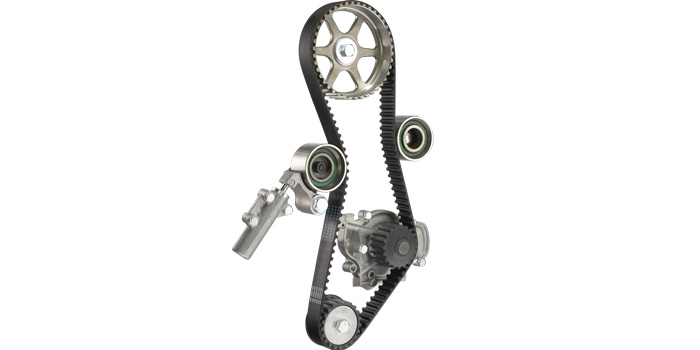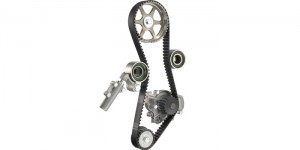For the technician, timing belt replacement can be a time-consuming and labor-intensive repair. For the consumer, this translates into a hefty repair bill for a service that may need to be performed more than once during the life of their vehicle. For the parts specialist, it presents an excellent opportunity to sell all the parts and supplies required to perform this often complicated repair.
According to one major aftermarket manufacturer, there are more than 70 million vehicles currently in operation which rely on timing belts to keep their crankshaft and camshaft(s) in sync. The manufacturer’s recommended replacement intervals can range between 50,000 and 120,000 miles for timing belts. Waiting until the belt gives out can have disastrous consequences. Seventy percent of these applications are interference engines, and nearly 50 percent of these timing systems also drive the engine’s water pump. As a result, complete timing kits (especially those including a water pump) have become a growing product line for many belt manufacturers, popular with technicians and parts specialists alike.
Before the introduction of the complete timing belt kit, the automotive aftermarket was limited to individual components or minor kits, which made it more difficult to source all of the components required to perform a complete repair. Traditionally, aftermarket manufacturers have been focused on only one or two categories, and this sort of repair crosses traditional supplier lines. Timing belts, tensioners and pulleys came from one supplier, gaskets and seals from another. When a belt-driven water pump was needed, yet another manufacturer contributed to the mix. Fortunately, today’s belt and rubber manufacturers have begun to embrace the concept of outsourcing, making these all-in-one kits possible. By partnering with other aftermarket companies (and sometimes even the OEMs) to provide these missing pieces of the timing puzzle, the parts specialist, the technician, and ultimately, the consumer benefit.
The timing belt water pump kit is a convenient and simple way for the parts specialist to offer the technician everything in one box. It simplifies cataloging, reduces the number of SKUs and helps eliminate those unexpected callbacks over forgotten or overlooked components. It is the most complete method of providing all the necessary components, and also offers ready access to some hard-to-find components. For instance, there are a number of applications that use hydraulic tensioners to provide damping and keep constant tension on the belt drive. These tensioners are not often found in more basic timing kits, partly due to their increased cost over spring-loaded tensioners. Sometimes, the devil is in the details, and complete kits also often include small hardware-type items like springs and fasteners, which are otherwise nearly impossible to source from anywhere but OEM dealers. Finally, when compared to purchasing individual components from several different sources, complete timing kits can offer a significant savings to the service dealer as well as the consumer.
Replacing the timing belt and associated pulleys as part of a preventative maintenance schedule is only a portion of the complete timing repair. For timing belts operating well past their recommended service intervals, remember that the rest of the timing components are at least as old as (or even older than) the belt, and may be worn out too! CM







